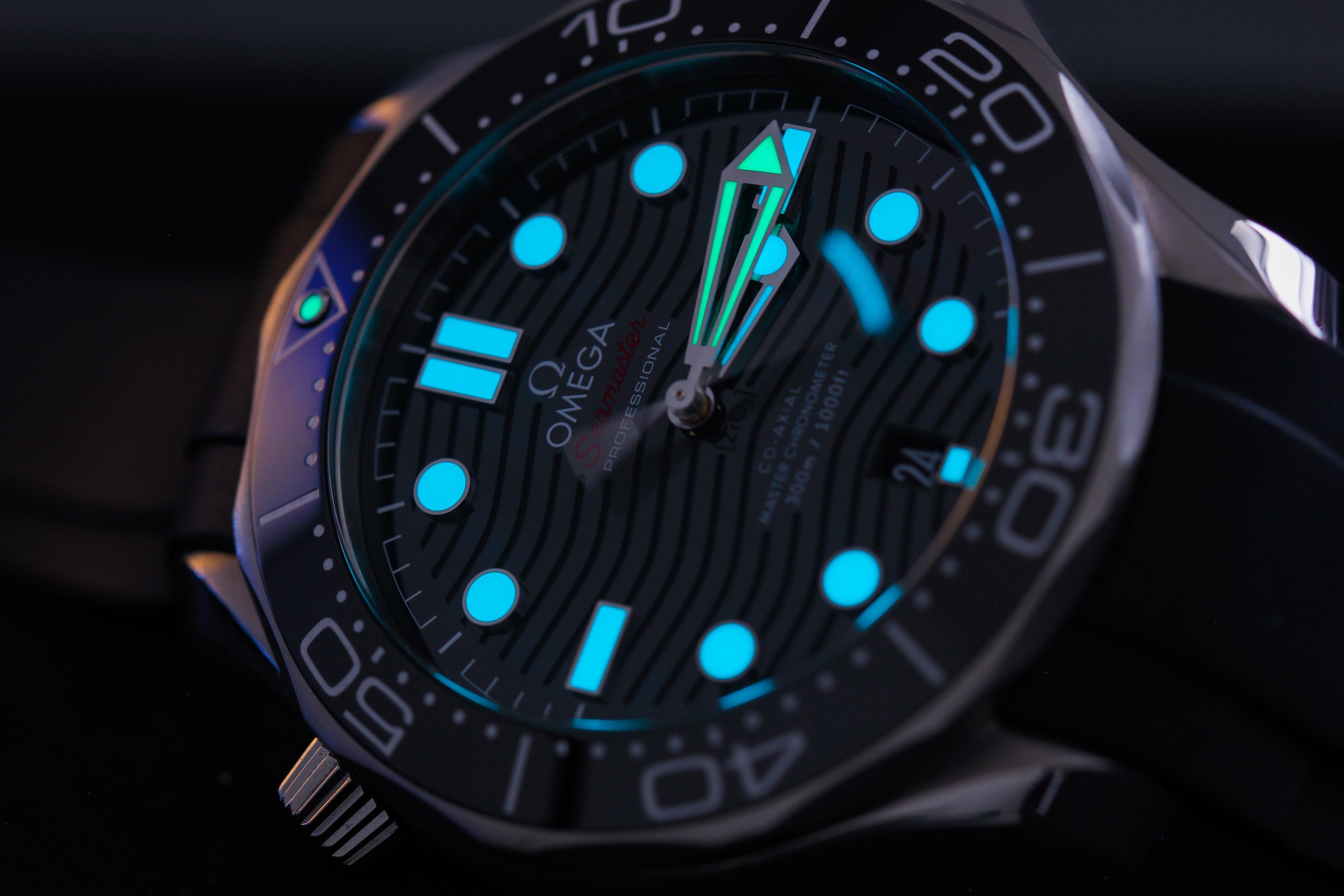In the world of horology, there's an element that adds a touch of magic to watches, particularly in low-light conditions—the luminescent material, commonly known as "lume." Lume not only serves a practical purpose by enhancing readability in the dark but also adds a captivating visual element to timepieces. In this blog post, we'll dive into the fascinating world of lume, its history, and its different types.
What is Lume? Lume, short for luminescent material, refers to a substance that emits light after being exposed to certain forms of energy, such as sunlight or artificial light. In the context of watches, lume is typically applied to the watch hands, hour markers, and sometimes the bezel to improve visibility in dimly lit environments.
Types of Lume:
-
Superluminova: Superluminova is one of the most commonly used luminescent materials in the watch industry. It is a non-radioactive pigment that stores light and slowly releases it over time. Superluminova can come in various colors, but the most popular are green and blue. Its brightness and longevity make it a reliable choice for watch manufacturers.
-
Tritium: Tritium, once widely used in watchmaking, is a radioactive isotope of hydrogen that emits a constant glow without needing an external source of light. However, due to its radioactive nature, its usage has significantly declined in recent years, and regulations have become stricter. Watches with tritium lume are now considered vintage collectibles.
-
Chromalight: Chromalight is Rolex's proprietary luminescent material. Known for its distinctive blue hue, Chromalight offers an impressive level of brightness and long-lasting glow. Its unique color enhances readability, and its performance remains consistent even in challenging conditions.
-
LumiNova: LumiNova is another popular luminescent material used in the watch industry. It is a non-radioactive photoluminescent pigment that can be charged by exposure to light and then emits a strong, long-lasting glow. LumiNova is available in various colors and is known for its high performance and versatility.
The Importance of Lume in Watches: Lume serves a practical purpose by allowing wearers to read the time in low-light situations, such as during nighttime or in dark environments. It enhances the functionality and usability of a timepiece, ensuring that time can be effortlessly read, regardless of the lighting conditions. Additionally, lume adds a touch of aesthetic appeal, elevating the visual experience of a watch, especially when seen in the dark.
Maintaining Lume: Over time, luminescent materials may experience a gradual decrease in brightness as their properties diminish. However, proper care and maintenance can help preserve the lume's longevity. Avoiding prolonged exposure to direct sunlight or extreme temperatures can help prolong its effectiveness.
Lume is a captivating element in the world of watches, combining functionality and aesthetics in a remarkable way. It ensures that time can be effortlessly read in low-light conditions, while also adding an enchanting glow to the dial. Whether it's Superluminova, Chromalight, LumiNova, or other luminescent materials, the use of lume enhances the overall experience and utility of a timepiece, ensuring that it shines brightly, day or night.
So, the next time you find yourself in a dimly lit room or exploring the night sky, take a moment to appreciate the luminescent glow of your watch. It's a reminder of the remarkable craftsmanship and ingenuity that goes into creating timepieces that can illuminate our lives.


